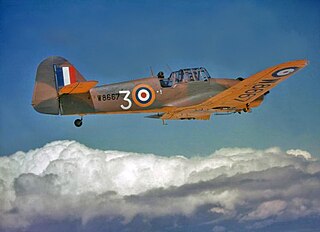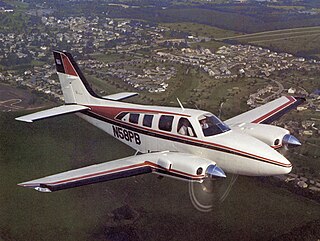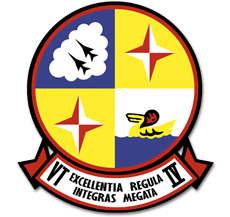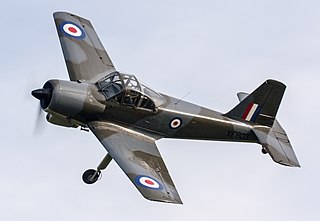
A flight simulator is a device that artificially re-creates aircraft flight and the environment in which it flies, for pilot training, design, or other purposes. It includes replicating the equations that govern how aircraft fly, how they react to applications of flight controls, the effects of other aircraft systems, and how the aircraft reacts to external factors such as air density, turbulence, wind shear, cloud, precipitation, etc. Flight simulation is used for a variety of reasons, including flight training, the design and development of the aircraft itself, and research into aircraft characteristics and control handling qualities.

The Curtiss JN "Jenny" was a series of biplanes built by the Glenn Curtiss Aeroplane Company of Hammondsport, New York, later the Curtiss Aeroplane and Motor Company. Although the Curtiss JN series was originally produced as a training aircraft for the US Army, the "Jenny" continued after World War I as a civilian aircraft, as it became the "backbone of American postwar [civil] aviation".

The Raytheon T-1 Jayhawk is a twin-engined jet aircraft used by the United States Air Force for advanced pilot training. T-1A students go on to fly airlift and tanker aircraft. The T-400 is a similar version for the Japan Air Self-Defense Force.

The McDonnell DouglasT-45 Goshawk is a highly modified version of the British BAE Systems Hawk land-based training jet aircraft. Manufactured by McDonnell Douglas and British Aerospace, the T-45 is used by the United States Navy as an aircraft carrier-capable trainer.

The Miles M.9 Master was a British two-seat monoplane advanced trainer designed and built by aviation company Miles Aircraft Ltd. It was inducted in large numbers into both the Royal Air Force (RAF) and Fleet Air Arm (FAA) during the Second World War.

Edwin Albert Link was an American inventor, entrepreneur and pioneer in aviation, underwater archaeology, and submersibles. He invented the flight simulator, which was called the "Blue Box" or "Link Trainer". It was commercialized in 1929, starting a now multibillion-dollar industry. In total, he obtained more than 27 patents for aeronautics, navigation and oceanographic equipment.

A trainer is a class of aircraft designed specifically to facilitate flight training of pilots and aircrews. The use of a dedicated trainer aircraft with additional safety features—such as tandem flight controls, forgiving flight characteristics and a simplified cockpit arrangement—allows pilots-in-training to safely advance their skills in a more forgiving aircraft.

The Beechcraft Baron is a light twin-engined piston aircraft designed and produced by Beechcraft. The aircraft was introduced in 1961. A low-wing monoplane developed from the Travel Air, it remains in production.

The Beechcraft T-34 Mentor is an American propeller-driven, single-engined, military trainer aircraft derived from the Beechcraft Model 35 Bonanza. The earlier versions of the T-34, dating from around the late 1940s to the 1950s, were piston-engined. These were eventually succeeded by the upgraded T-34C Turbo-Mentor, powered by a turboprop engine. The T-34 remains in service more than seven decades after it was first designed.

VT-4 Training Squadron 4 is a training squadron of the United States Navy. Initially established as Basic Training Group NINE (BTG-9) in the 1950s, the squadron was redesignated as Training Squadron FOUR (VT-4) on 1 May 1960 and based at Naval Air Station Pensacola, Florida.

Tuskegee Airmen National Historic Site, at Moton Field in Tuskegee, Alabama, commemorates the contributions of African-American airmen in World War II. Moton Field was the site of primary flight training for the pioneering pilots known as the Tuskegee Airmen, and is now operated by the National Park Service to interpret their history and achievements. It was constructed in 1941 as a new training base. The field was named after former Tuskegee Institute principal Robert Russa Moton, who died the previous year.

The Ryan PT-22 Recruit, the main military version of the Ryan ST, is a military trainer aircraft that was used by the United States Army Air Corps during WWII for primary pilot training.

The Percival P.56 Provost is a basic trainer aircraft that was designed and manufactured by British aviation company Percival.

The John D. Odegard School of Aerospace Sciences is a multidisciplinary college within the University of North Dakota (UND) in Grand Forks, North Dakota. The school was formed in 1968. The majority of the school's fleet of over 120 aircraft is based at nearby Grand Forks International Airport and is the largest fleet of civilian flight training aircraft in North America. UND Aerospace also operates a flight training center at Phoenix–Mesa Gateway Airport in Mesa, Arizona. Today, the school has many aerospace-related programs including commercial aviation, Unmanned aircraft systems operations, air traffic control, airport management, Space Studies, Computer Science, Atmospheric Sciences, and Earth System Science & Policy. Currently, the school has over 500 faculty and 2,000 students making it the second largest of UND's degree-granting colleges. The present dean of the school is Robert Kraus.

The Curtiss Flying School was started by Glenn Curtiss to compete against the Wright Flying School of the Wright brothers. The first example was located in San Diego, California.

The Airco DH.6 was a British military trainer biplane used by the Royal Flying Corps during the First World War. Known by various nicknames, including the "Clutching hand" and "Skyhook", many survived to be used as a civil light aircraft in the postwar era.

The Naval Air Training and Operating Procedures Standardization (NATOPS) program prescribes general flight and operating instructions and procedures applicable to the operation of all United States naval aircraft and related activities. The program issues policy and procedural guidance of the Chief of Naval Operations (CNO) and the Commandant of the Marine Corps (CMC) that is applicable to all United States Navy (USN) and United States Marine Corps (USMC) aviation personnel.
ATP Flight School is the largest flight training company in the United States. The curriculum focuses on airline-oriented pilot programs at locations across the country. ATP is the leading supplier of professionally trained pilots to the nation's regional airlines.
Link Aviation Devices was a manufacturer of aircraft simulators. The company is most notable for inventing the Link Trainer, and is credited with starting the flight simulator industry. It is currently a subsidiary of CAE Incorporated.



















